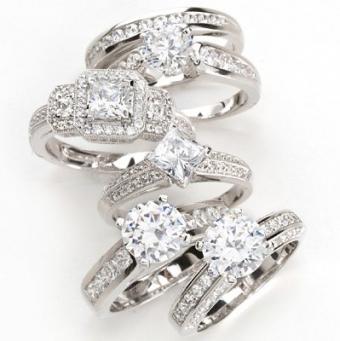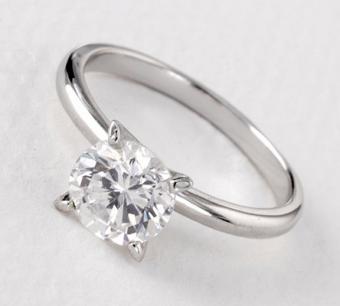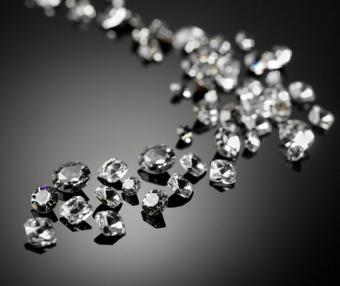Diamond Facts

Diamonds are beautiful, popular gemstones, and understanding the facts about diamonds can help brides-to-be appreciate their rarity and exquisite sparkle beyond how good an engagement ring looks on that one special finger. Couples who know more about diamonds can also choose stones more wisely, opting for a better quality gem that will truly last as long as their love.
Greek Name

The word "diamond" comes from the Greek word adamas, which means unconquerable, unbreakable, and indestructible. While diamonds are among the hardest substances on Earth and they are very durable, even a well cut gem can be scratched or chipped if handled inappropriately. Still, this indestructible name is perfect for the unbreakable bonds of marriage couples hope to form.
Pure Carbon

Chemically, diamond is the pure crystalline form of carbon, the same element that makes up far less glamorous substances such as coal and graphite. To form diamond, the carbon molecules are structured in a very stable, very strong crystal lattice. This lattice not only gives diamond its physical properties, but also contributes to how it can be carefully faceted and brilliantly cut.
How Diamonds Form

Diamonds are formed under tremendous heat and pressure deep beneath the Earth's crust. Volcanic activity can help bring rough diamonds to the surface, and mining old volcanoes can often reveal diamonds. Some very rare diamonds are also formed by meteorite impacts that generate sufficient heat and pressure to crystallize carbon.
Impurities

Pure, untainted diamond is exceptionally rare. Most diamonds have at least some impurities, and nitrogen is the most common. Adding nitrogen to the crystal lattice gives the stones a brown or yellow color, depending on how much nitrogen is present and how it is concentrated during the diamond's formation.
Diamond Shapes

Because of its geometric crystal lattice, diamond can be cut and sculpted into a variety of shapes. Round diamonds are the most popular for jewelry, but other cuts such as princess, emerald, Asscher, oval, and marquise are also popular choices for diamond engagement rings, right hand rings, and other jewelry.
Antwerp Diamonds

Antwerp, Belgium is considered the diamond capital of the world because the vast majority of cut stones are traded through the city and the diamond brokers headquartered there. Before the stones arrive in Belgium, more than 90 percent of them will be cut into suitable shapes in India.
Diamond Color

While white or "colorless" diamonds are the most popular and most familiar, diamonds can actually have a variety of different colors depending on what impurities are present in the gem's chemical structure. Yellow, brown, chocolate, champagne, green, blue, and pink diamonds are all available, and the richest, most astonishing colors are called "fancy" diamonds for their breathtaking shades.
Diamond Jewelry

Since the fifteenth century, diamonds have been traditional for engagement rings, and today the diamond engagement ring is still the most popular use of jewelry-quality stones. Other diamonds are frequently used in right hand rings, wedding rings, earrings, bracelets, necklaces, and pendants.
Sign up for our newsletter featuring all the latest stories and products we love.
Australian Diamonds

By volume, the largest quantity of diamonds in the world are mined from Australia. Many nations have diamond mines, however, though the quality and quantity of stones from each mine can vary greatly. South Africa, Brazil, India, Russia, and Canada are other examples of diamond producing nations.
Industrial Diamonds

Despite their popularity in jewelry, the majority of mined diamonds are not considered gem quality. Instead, these flawed stones are called industrial diamonds and are used for a variety of purposes, including coatings on drill bits, scalpels, and other tools. Diamonds are also used in electronic semiconductors, and other uses for industrial diamonds are always being explored.
All About Diamonds

There is much more to learn about diamonds than simply how to shop for a nice stone. If you're interested in learning more about these incredible gems, check out…







